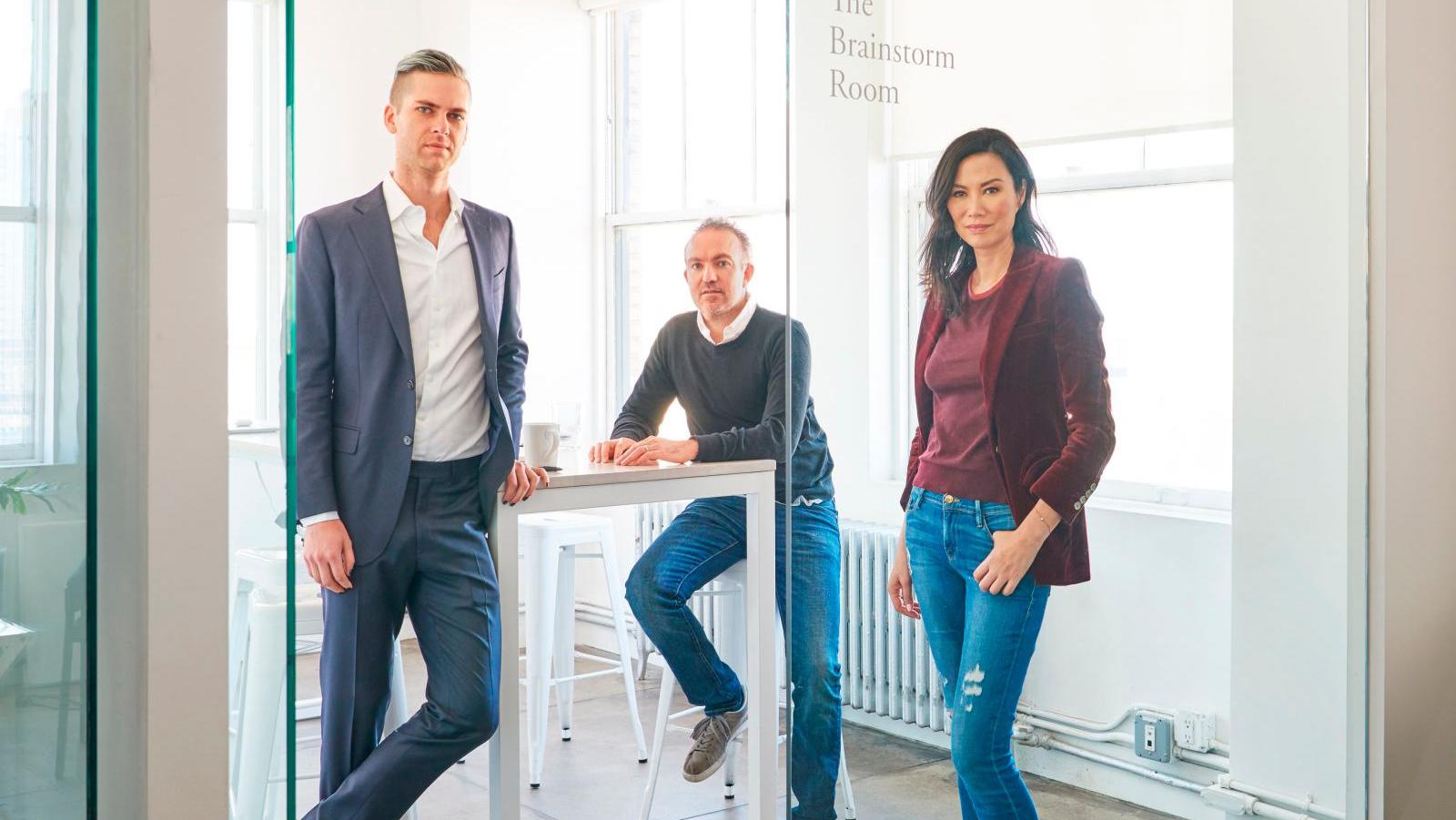Recycle someone else’s idea, pitch to investors, raise money, fail to make a profit, start again. How many times can Artsy roll the stone up the mountain just to see it fall back?
Carter Cleveland, Sebastian Cwilich and Wendi Murdoch.
Photo Jason Schmidt
Artsy is now ten years old, with more than $100 million from private equity firms and famous investors. While its name and fame grew among art collectors, the profit margins never did. The business model seemed to change every couple of years; going from artificial intelligence-driven art predictions to an online hub for galleries and finally to yet another online auction company. More recently, the departure of Sebastian Cwilich, co-founder and chief operating officer, followed by lay-offs and reports of a data breach, all has many observers wondering how long the platform can survive. In Search of a Business Model Artsy was created in 2009 by senior-year Princeton student Carter Cleveland, its CEO since then, with the purpose of “democratising the art market for everyone”. To form the company, he teamed up with Sebastian Cwilich, a mathematician from Columbia who had just spent two years working for Christie’s. Artsy always presented itself as a classic disruptive start-up, like Facebook, YouTube, Linkedin and Spotify, arriving with a completely new idea and a business model designed to change…
com.dsi.gazette.Article : 6237
This article is for subscribers only
You still have 85% left to read.
